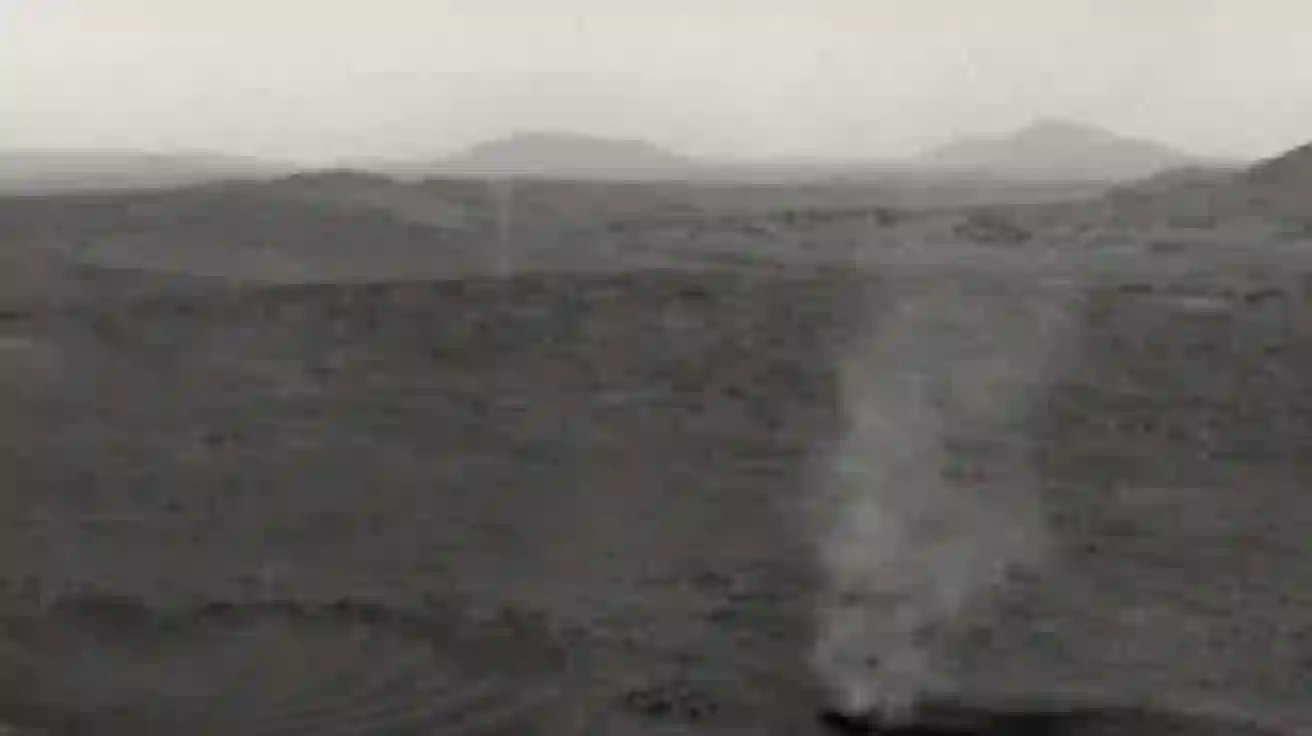
High above the red sands of Mars, an extraordinary weather encounter played out—and NASA’s Perseverance rover was lucky enough to catch it on film. On January 25, the rover captured something seldom seen, even on Earth: one Martian dust devil swallowing another in a mesmerizing, swirling display of alien weather.
Dust devils on Mars are no strangers to scientists, but moments like this—where one devours another—are almost never documented. The video, taken from about half a mile away on the edge of Jezero Crater, shows a large whirlwind, roughly 210 feet in width, engulfing a smaller, 16-foot-wide dust devil. It’s a scene that’s part science, part spectacle, and a reminder of how alive Mars’ atmosphere really is—even with its notorious thinness.
Not Your Average Martian Breeze
Martian dust devils aren’t unlike those found on Earth. They form on clear, dry days when sunlight heats the planet’s surface faster than the surrounding air. That difference creates rising currents of warm air that begin to rotate, forming a spinning column of wind and dust that resembles a tiny tornado.
These dust devils may look strong, but not to worry: In the thin atmosphere of Mars, it feels more like a gust of wind.
Studying these phenomena can teach my team about the Martian climate: https://t.co/ilmSSfkh4U pic.twitter.com/azI0wcqrez
— NASA's Perseverance Mars Rover (@NASAPersevere) April 3, 2025
But while Earth’s dust devils might be little more than a desert curiosity, their Martian counterparts have a much bigger role to play. These whirlwinds can tower up to half a mile high and are believed to contribute nearly half of the dust floating in Mars’ atmosphere. This dust doesn’t just hang around—it shapes weather patterns, obscures visibility, and even influences solar-powered equipment.
“They’re not just pretty twisters,” said Dr. Mark Lemmon, a planetary scientist with the Space Science Institute and a member of the Perseverance team. “They can reduce visibility, alter wind patterns, and in large numbers, change the climate on a local scale.”
The Science of a Dust Devil Duel
The recent footage shows more than just a swirling column of dust—it highlights the unpredictable and dynamic nature of the Martian environment. According to Lemmon, when two dust devils cross paths, a few outcomes are possible: they can destroy each other, pass by unaffected, or—most interestingly—merge, with the larger consuming the smaller.
That’s exactly what happened in this rare event. As the two devils met, the smaller one seemed to dissolve into the vortex of the larger, as if overwhelmed by its sheer force. In the background, two more dust devils spin lazily, like spectators to this dusty duel.
Even though the larger dust devil “won,” neither twister likely stuck around for long. Martian dust devils typically last no more than ten minutes before fading away.
Tracking Twisters on the Red Planet
Capturing these devils in action is no easy feat. Unlike storms on Earth, which can be predicted using satellite data and radar, dust devils appear with little warning. Perseverance regularly scans its surroundings to try and catch these elusive phenomena, providing scientists with rare glimpses into their behavior.
The swirling columns leave behind visible traces on the Martian surface—darkened paths where dust has been lifted away, exposing the volcanic rock beneath. These ghostly tracks can appear as lines, loops, or spirals, revealing the paths the devils have taken long after they’ve vanished.
Dr. Katie Stack Morgan, deputy project scientist for Perseverance at NASA’s Jet Propulsion Laboratory, emphasized the scientific value of these studies: “Dust devils are more than just fleeting events. They provide insight into the state of the Martian atmosphere—wind speeds, temperature variations, even seasonal changes.”
A History of Martian Whirlwinds
Dust devils have been part of Mars exploration since the 1970s, when NASA’s Viking orbiters first photographed them from above. In the 1990s, the Pathfinder lander recorded one from the Martian surface and even felt one pass over. Since then, several rovers have observed the phenomenon, but Perseverance is the first to capture one in both video and audio.
In fact, back in 2021, Perseverance recorded the first-ever sounds of a Martian dust devil using its onboard microphones—offering an eerie whisper of wind from another world.
More Than Just Dust in the Wind
While these alien whirlwinds may seem like minor curiosities, they’re a key piece of the Martian climate puzzle. Understanding how dust devils form and interact could help researchers better prepare for future missions—especially human exploration, where dust management will be crucial.
And who knows—maybe the next time a Martian twister rises, Perseverance will be watching, ready to capture another spectacular show on the dusty red stage of the solar system’s fourth planet.











